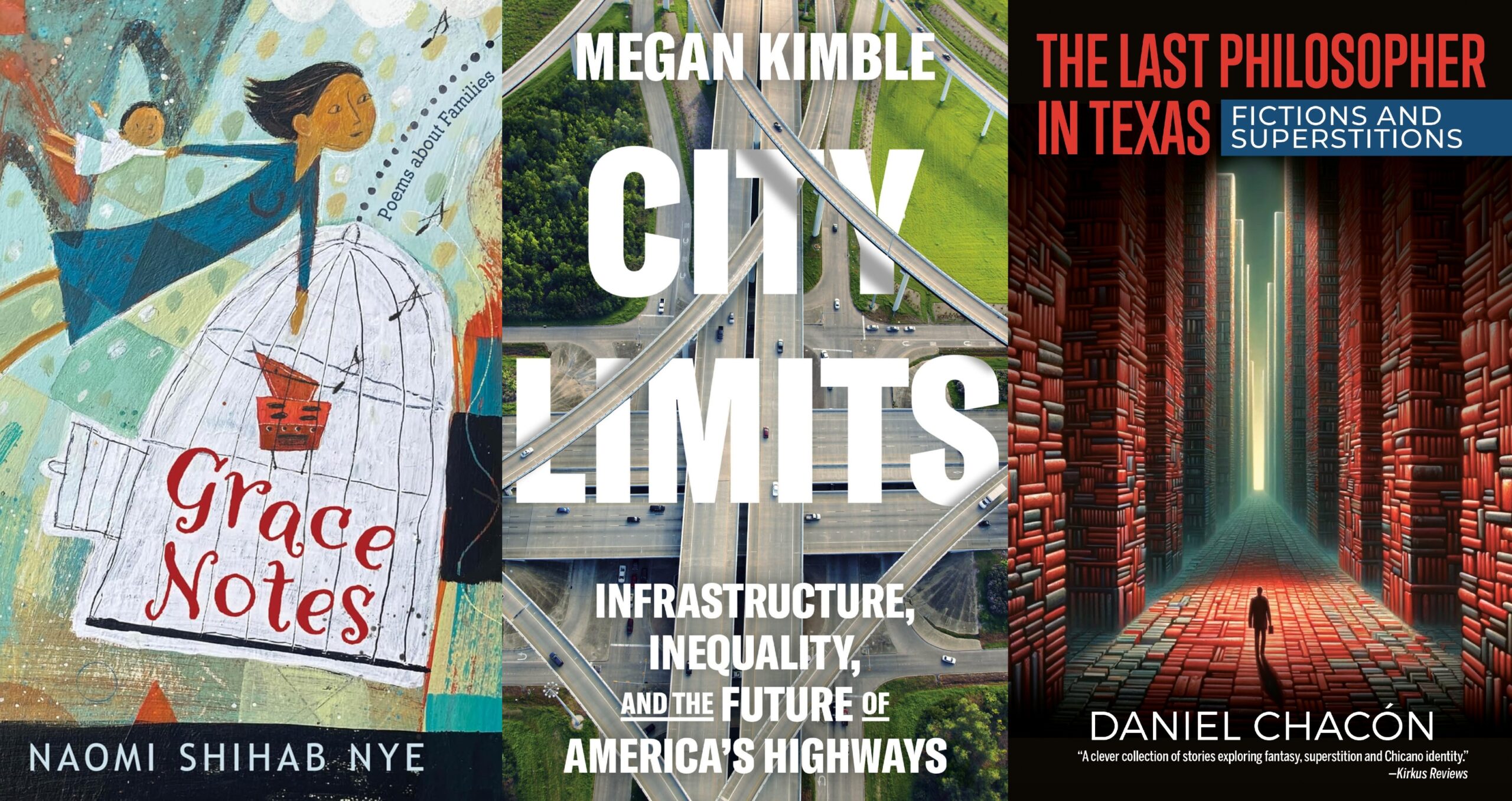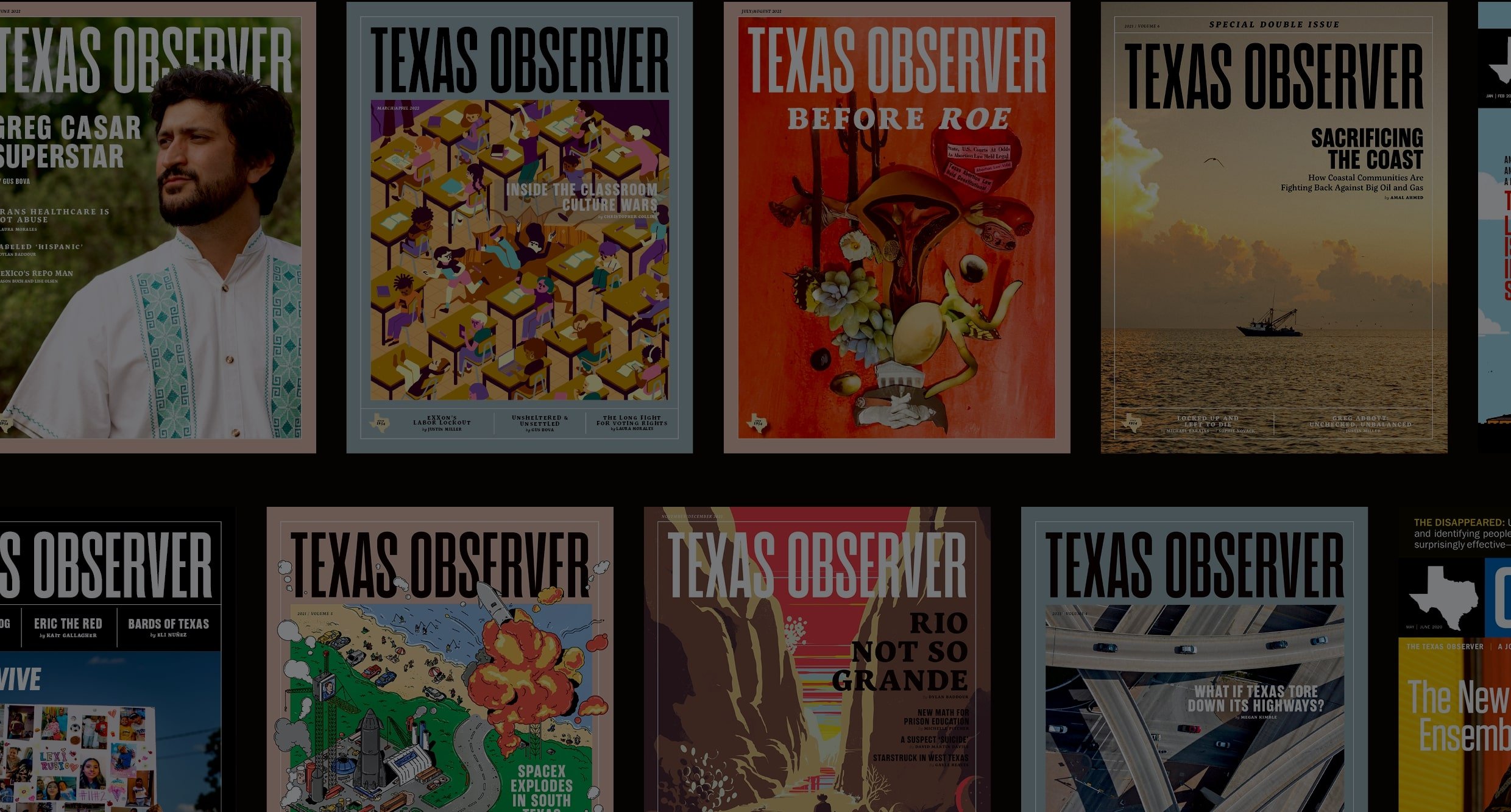The Big Empty
For many residents of Clarksville, the seat of east Texas’ Red River County, 2008 arrived trailing a sense of doom. On December 31, 2007, after some 30 years of business, the local Wal-Mart had closed its doors. Clarksville isn’t the first Texas town to experience the shock and subsequent shudder of the giant retailer’s departure; Hearne lost its Wal-Mart way back in 1990. But I’m a Clarksville legacy, so to speak, so this particular closing was big news for me.
My mom and aunt grew up in Clarksville, my cousin has made it his home, and my grandparents lived there most of their adult lives. As a kid, I visited them at least every other month, and I have many quaint memories of walking around the town square, shopping at Piggly Wiggly and eating red hot tamales (a delicacy rarely seen west of Interstate 45).
Then there was Wal-Mart. It was located at the edge of town, on Highway 82, and we’d occasionally go there for some household good or another. At the time, I thought it was unique to Clarksville, and as it turns out, it was one of the first Wal-Mart stores in Texas. They didn’t yet exist where I lived, in suburban Dallas, which is now one of the most Wal-Mart-saturated areas in the state.
I’d go straight to the toy aisle, which offered only slightly more variety than the dime store’s. It seemed kind of goofy and pathetic in comparison with the Circus World at my local mall, but that’s what I liked about it. There was something delightfully quirky about its strange assortment of off-brand dolls and games no one had heard of. Later, as a young teenager, I got tentative driving lessons from my uncle in the parking lot. It was closed on Sundays, after all.
Before I graduated from high school, a Wal-Mart appeared within a mile of my Garland home. My mom was thrilled, but I quickly discerned that the only thing this store had in common with the familiar one in Clarksville was the sign. The parking lot never ceased to be packed, and inside was chaos, though it must have been twice the size of the Clarksville store. It felt intentionally different to me, rolled out according to research on suburbanites and what makes them tick. Or maybe it was just the swarms of suburbanites that fostered that impression. Unless I was a captive on my mother’s errand route, I avoided it.
That was nearly 20 years ago, and since then Wal-Mart Stores Inc. has infiltrated just about every urban and suburban area of the country, all the while maintaining its grip on small towns, not to mention its impact on other nations. In that time, anti-Wal-Mart activists have amassed documentation of the company’s deplorable treatment of workers (especially women and undocumented immigrants) and its deleterious effects on retail wages, manufacturing jobs, communities, small businesses, and the environment. Despite recent moves by the company to ameliorate its reputation, Wal-Mart remains firmly planted in the progressive imagination as an encroaching global evil.
Clarksville, I imagine, was a poster town for the kind of place Sam Walton was looking to expand. It’s only 65 miles from the Arkansas border, for one. It also happened to fit certain of Walton’s criteria. Its population, for instance, has hovered near 4,000 for decades, which was in keeping with his early strategy of locating stores in towns with fewer than 5,000 people. And perhaps most important, there was nothing of Wal-Mart’s stature to be found anywhere in it. In other words, what competition did exist was merely “competition.” It existed in theory but posed no real threat.
Before Wal-Mart’s arrival, Clarksville was holding its own. While it had never been a tourist town, miles from the interstate as it is, it had managed to retain just enough natives to sustain it. The town square, as I remember it, was full and diverse. There were clothing stores, drugstores, a hardware store, and a dime store. It’s a cliché by now, of course, but things began to visibly change within about five years of you-know-who’s opening, and the square has struggled for viability ever since. Today it’s a strange mishmash: an antique store or two, an Italian restaurant, a movie-rental shop, and a title company. Amazingly enough, a drugstore dating back to the 1930s is still there (missing its soda fountain, but impressive nonetheless).
But the first thing you notice about the square now is its sense of general scarcity. It was revitalized in 2003 under the Texas Historical Commission’s Main Street Program, and while the aesthetic effect is nice, it’s hard to mask an absence of business with a fresh coat of paint and some new grass.
John Nichols owned a ladies’ boutique on the square at the time of Wal-Mart’s opening. He closed the store in 1990, when it was no longer feasible to operate because most of his customer base-other local business owners whose own stores had taken a hit-could no longer afford to shop there. He considers Wal-Mart only the most obvious cause of the square’s demise, though, citing the lure of big-city shopping, increasing mobility, and changing business concepts as other contributing factors.
Sometime in the early 1990s, Clarksville was deemed worthy of an upgrade, and Wal-Mart abandoned its original store for a bigger one, though not a Supercenter, on a neighboring lot. The old shell and accompanying parking lot still stand-too small for Wal-Mart, but too cavernous for any homegrown business; it serves as a monthly distribution center for the local food bank.
The new store wasn’t given much of a chance when Supercenters began appearing menacingly close by. There are five Supers within 45 miles of Clarksville, in New Boston, Mount Pleasant, and Paris, Texas, and Idabel and Broken Bow, Oklahoma. Clarksville’s store was literally surrounded, and the gradual result was an inferiority complex. To local shoppers, their hometown Wal-Mart came to seem inadequate and outdated compared with the robust Supers. Sure, it would do in a pinch, but more and more, residents passed it by in favor of one-stop shopping down the road. For that reason, I think many residents feel some responsibility for the closing.
I’ve read that the threat of closure had faced the Clarksville Wal-Mart for some time, and who really knows why or how it was spared until 2007? The official reason for the shuttering was “sagging sales,” but sagging compared with what? Compared with any of the nearby Supers, sure. Compared with its heyday in the early 1980s, when there were still relatively few around? Wal-Mart’s business model has changed, and towns with fewer than 5,000 people, the ones that nurtured the store like one of their own, are no longer part of the formula. Wal-Mart now does business in some of the world’s most ostentatious cities (Beijing, São Paulo). Clarksville is like an old buddy from Wal-Mart’s pre-adolescent days with whom it wouldn’t be caught dead at a party.
Some 68 people worked at the Clarksville Wal-Mart, and the initial outcry over the closing-as expressed in several widely circulated e-mails-focused on the loss of jobs. I recently read that most of those laid off got offers to transfer to Supers, or were given severance packages. Regardless, their lives are doubtless more precarious now, even given that most of them worked part-time and didn’t really make much of a living anyway. The other issue preoccupying townspeople was their loss of access to consumer goods. As one woman pointed out, there is now nowhere local to buy such mundane staples as underwear and socks.
Immediately following Wal-Mart’s closing announcement, locals launched a movement to convince it to stay. I received an impassioned e-mail, forwarded by my aunt, urging folks to call a toll-free number, enter an extension, and then testify (to a voice mailbox or a person, it wasn’t clear) about the importance of Wal-Mart to Clarksville and Red River County. The idea was that if everyone pulled together, then maybe the suits at Wal-Mart would reverse course. They would realize they had been rash and careless, and they would give Clarksville another chance.
For a split second I considered picking up the phone. I felt personally spurned, and I wanted to take action. But the idea was preposterous. Clarksville was no match for Wal-Mart. I mean, didn’t these people know who they were dealing with? This is the company that eliminated meatcutting jobs companywide as soon as meatcutters in Jacksonville voted for union representation. But the Clarksville Wal-Mart belonged to a different time and a different mythology, one in which Sam Walton personally looked after each of his stores and treated employees like family. I was moved by the earnestness of the e-mail message and saddened by its desperation. It was stunning to realize that people would beg for Wal-Mart’s attentions even as they acknowledged its role in their town’s stagnation. It was especially hard to conceive of as a resident of Austin, where I’d since moved, and where local businesses abound and a good portion of the city bemoans-if not outright protests-Wal-Mart’s every incursion.
But I can’t blame the good people of Clarksville for their response. It speaks to the society in which we all now live: Anytown, U.S.A. When even the dubious “right” to be an Anytown is taken away, people are left utterly bewildered. I’m tempted to believe Clarksville Mayor Ann Rushing, who told the Paris News she thinks some mom-and-pop business will return, but I wonder if survival post-Wal-Mart will be any easier for local business owners than eking out a living in its shadow was? I’m afraid the legacy of Wal-Mart and its ilk has left us with an irrational attraction to all things gigantic and box-shaped. Add to that the powerful promise of savings, and we’re at their mercy. I’m not sure the people of Anytown, or Clarksville, can be convinced otherwise.
I like to fantasize about living someday in a town not too dissimilar from the Clarksville of my childhood. I would live within walking distance of the town square like my grandparents did and, like my grandfather, I would walk to my favorite of four (!) drugstores every morning for coffee. What could I possibly need on a regular basis that my town’s economy couldn’t supply?
Alas, I was born too late to play that out. At least I have some sense of it. I’m imprinted with the memories of my mom and aunt and grandparents, who experienced the vivacity (among other things) of small-town life. I worry that subsequent generations won’t get even secondhand impressions of that kind of life. If they can’t at least imagine such places, how will they know alternatives to Wal-Mart exist?
C.B. Evans is a writer living in Austin.

